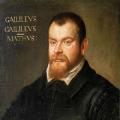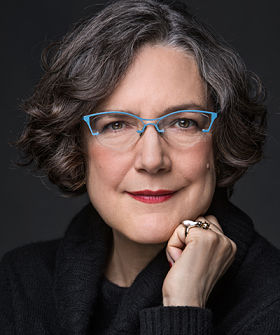370. Ingrid Rowland on Rome in the Renaissance
For our finale of the Italian Renaissance series we're joined by Ingrid Rowland, to speak about art, philosophy, and persecution in Renaissance Rome.
Themes:
• I.D. Rowland, The Culture of the High Renaissance: Ancients and Moderns in Sixteenth-Century Rome, (Cambridge: 1998).
• I.D. Rowland (ed.), The Place of the Antique in Early Modern Europe (Chicago: 1999).
• I.D. Rowland (trans.), Vitruvius Pollio, Ten Books on Architecture (Cambridge: 1999).
• I.D. Rowland, From Heaven to Arcadia; The Sacred and the Profane in the Renaissance (New York: 2005).
• I.D. Rowland, Giordano Bruno, Philosopher/Heretic (Chicago: 2008).
• I.D. Rowland (trans.) and E. Canone (ed.), Giordano Bruno: On the Heroic Frenzies (Toronto: 2013).
• I.D. Rowland, From Pompeii: the Afterlife of a Roman Town (Cambridge MA: 2014).






Comments
New episode already?…
New episode already? Brooootal!! Keep 'em coming!
In reply to New episode already?… by Mirza Beglerov…
New episode
Yes, they come once a week! Keeps me busy and out of trouble.
Completition?
Hello,
Do you have any idea of when the series will be finished? I am a big fan of your podcast and am scared I will die before you have finished. You understand that when you die you may not have experienced all known philosphoy. Don't let me down. Or can you give me guidance of where I should go to complete my experience.
Thanks friends.
In reply to Completition? by Iniad
When will it all end?
No idea, but I guess it will be a while - if I manage to keep going then to get even to about 1800 will probably take another decade. Of course there are other places to go for coverage of the later periods, especially in book form, and if you look under "Links" below you'll also find suggestions of other philosophy podcasts. One that goes chronologically but not in as much detail is "Philosophize This!"
It took me one year and six…
It took me one year and six months to listen to 370 episodes (actually started listening when you published the interview with Skinner... I hoped I would never catch up, alas...). Thank you, truly amazing work! I wish you a lot of health, but also motivation to keep going :)
As for me, until Reformation is done I decided to listen to History of Rome, which seems fitting after the Renaissance.
In reply to It took me one year and six… by Nedim
History of Rome
Also appropriate since "History of Rome" helped inspire this podcast! Also check out "Revolutions," an epic podcast made by the same host, Mike Duncan.
Well, that took only three…
Well, that took only three months. While listening to the "History of Rome" I kept thinking of what were the various philosophers doing during this time, and how the events might have shaped their thoughts. That is why I love going back to the date section in the books. Its hard not to think that Roman Stoics' views on ethics were not informed by their predicament of living in those times, and one might speculate that the fact that Plotinus and co. lived during the crisis of the third century might have influenced their views and preference for Platonism. We haven't reached Hobbes yet, but his whole enterprise seems to be directly informed by the civil war. It makes one think of the contingency in development of ideas in philosophy, no?
In reply to Well, that took only three… by Nedim
Contingency
Yes absolutely. I think maybe I even mentioned in the podcast the idea that the upheavals of the 3rd century may have influenced Neoplatonism? And the current series on the Reformation is basically one long demonstration of how the course of philosophy was massively changed by a set of historical events that had more to do with religion and politics.
In reply to Well, that took only three… by Nedim
Seneca episodes in Literature and History podcast
Mr. Nedim,
You might check out a couple of episodes in the superb podcast Literature and History. Episodes 65 & 66 cover the life & times and writings of Seneca. Although it has been a couple of years since I listened to those episodes, I do recall that the podcaster, Doug Metzger, discussed events occurring in Rome and the Roman empire at the time and Seneca's life, philosophy, and writings. .
Peter, your podcast is one…
Peter, your podcast is one of the greatest joys! My admiration for what you have done and continue doing is boundless. Thank you.
Add new comment